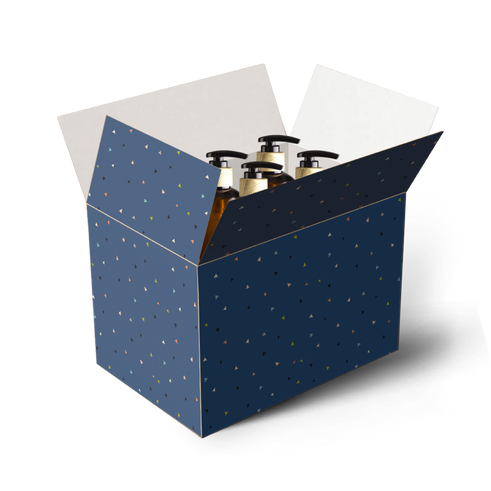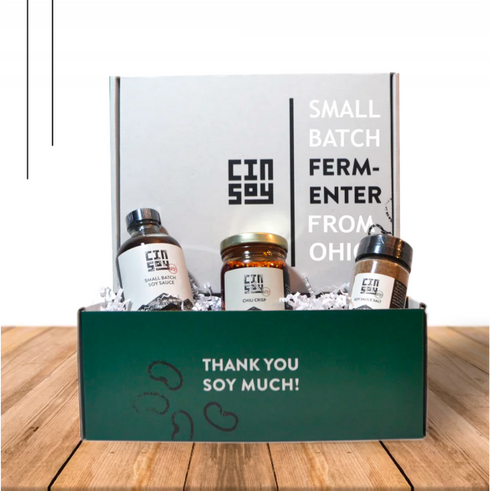Packaging 101: The Complete Guide
- Packaging 101
- Types of Packaging
- Aseptic Packaging
- Blister Packaging
- Biodegradable Packaging
- Bulk Packaging
- Carbon Neutral Packaging
- Circular Packaging
- Clamshell Packaging
- Compostable Packaging
- Cornstarch Packaging
- Corrugated Packaging
- Discreet Packaging
- Ecommerce Packaging
- Flexible Packaging
- Frustration Free Packaging
- Retail Packaging
- Secondary Packaging
- Smart Packaging
- Sustainable Packaging
- What is a PR Package?
- What is a Poly Mailer?
- Packaging Design Ideas
- AI Packaging Design
- Bakery Packaging Ideas
- Bath Bomb Packaging Ideas
- Bath Salt Packaging Ideas
- Body Butter Packaging Ideas
- Body Oil Packaging Ideas
- Body Scrub Packaging Ideas
- Brownie Packaging Ideas
- Cake Packaging Ideas
- Cake Pop Packaging Ideas
- Candle Packaging Ideas
- Candy Packaging Ideas
- Canva Packaging Design
- Chocolate Packaging Ideas
- Cinnamon Roll Packaging Ideas
- Clothing Packaging Ideas
- Coaster Packaging Ideas
- Coffee Bag Design Ideas
- Cookie Packaging Ideas
- Cosmetics Packaging Design
- Cotton Candy Packaging Ideas
- Cupcake Packaging Ideas
- DIY Packaging Ideas
- Dog Treat Packaging Ideas
- Food Packaging Ideas
- Empanada Packaging Ideas
- Etsy Packaging Ideas
- French Fries Packaging Ideas
- Frozen Food Packaging Ideas
- Hair Extension Packaging Ideas
- Handbag Packaging Ideas
- Jewelry Packaging Ideas
- Keychain Packaging Ideas
- Lash Packaging Ideas
- Lip Gloss Packaging Ideas
- Macaron Packaging Ideas
- Minimalist Packaging Ideas
- Mug Packaging Ideas
- New Employee Welcome Kit Ideas
- Packaging Colors
- Packaging Inserts Ideas
- Packaging Logo Design
- Packaging Typography
- Perfume Box Design Ideas
- Pizza Box Design Ideas
- Popcorn Packaging Ideas
- Scarf Packaging Ideas
- Skincare Packaging Design Ideas
- Soap Packaging Ideas
- Sock Packaging Ideas
- Sticker Packaging Ideas
- Sunglass Packaging Ideas
- Sustainable Packaging Ideas
- Tea Packaging Ideas
- Wax Melt Packaging Ideas
- Weed Packaging Ideas
- T-Shirt Packaging Ideas
- Wine Packaging Design Ideas
- What is a Packaging Engineer?
- Types of Packaging Materials
- Chipboard vs Cardboard
- Compostable Packaging Materials
- Alternatives to Plastic Packaging
- Edible Packaging Materials
- Food Packaging Materials
- Are Poly Mailers Recyclable?
- How to Recycle Cardboard Boxes
- How to Recycle Packaging Materials
- Medical Device Packaging Materials
- Mono Material Packaging
- Pharmaceutical Packaging Materials
- Plastic Food Packaging
- Protective Packaging Materials
- Reusing Packaging Materials
- Types of Packaging Foam
- Void Fill Packaging
- What is Chipboard?
- What is Kraft Paper?
- Offset vs Digital Printing
- RGB vs CMYK Printing
- Screen Printing vs Digital Printing
- Screen Printing vs Sublimation
- What is a Dieline in Packaging?
- What is Die Cutting?
- What is Digital Printing?
- What is Flexographic Printing?
- What is Glassine Paper?
- What is Offset Printing?
- What is Spot UV Printing?
- Why is 300 DPI Good for Printing?
- How to Estimate Shipping Costs
- How to Pack Glass for Shipping
- How to Mail a Bubble Mailer
- How to Make a Shipping Label
- How To Measure Box Dimensions and Sizes
- How to Ship Alcohol
- How to Ship Artwork
- How to Ship Books
- How to Ship a Cake
- How to Ship Candles
- How to Ship Chocolate
- How to Ship Clothes
- How to Ship Cookies
- How to Ship Food
- How to Ship a Hat
- How to Ship Jewelry
- How to Ship a Laptop
- How to Ship Perfume
- How to Ship a PC
- How to Ship Perishable Food
- How to Ship Plants
- How to Ship Shoes
- How to Ship Vinyl Records
- Packaging Symbols
- Shipping Large Items
- What is a Delivery Exception?
- What is Shipping Insurance?

Discover Phillip Akhzar’s journey, the Founder and CEO of Arka, bringing 16 years of expertise in packaging and supply chain logistics. Read more on Arka.
Why Perishable Shipping Demands Precision
Perishable foods exist in a delicate balance that shipping disrupts in multiple ways. Temperature fluctuations, extended transit times, and rough handling can quickly transform fresh, high-quality products into spoiled disappointments.
Temperature control sits at the heart of successful perishable shipping. Most perishable foods require specific temperature ranges to maintain quality and safety. Dairy products need consistent refrigeration between 32-40°F, while frozen items must stay below 0°F throughout their journey. Even brief temperature excursions can trigger bacterial growth, texture changes, or complete spoilage.
The USDA and FDA have established clear guidelines for maintaining food safety during transport. The FDA's Sanitary Transportation Rule requires businesses to maintain sanitary conditions during food transportation, including proper temperature control. These regulations protect consumers and help businesses avoid liability issues related to foodborne illness.
Moisture presents another significant challenge during shipping. Condensation can form when temperature-controlled packages experience environmental changes, potentially leading to soggy packaging, bacterial growth, or product deterioration. Transit timing becomes critical because every hour in transport increases the risk of spoilage. The industry standard aims for perishable deliveries within 30 hours.
Can You Ship Perishable Food Legally?
Yes, you can legally ship perishable food within the United States, but success depends on following specific regulations and carrier requirements. Each major shipping company has developed policies that balance food safety with practical logistics considerations.
- USPS accepts perishable food shipments through their Priority Mail Express and Priority Mail services. They require proper insulated packaging and clear labeling indicating perishable contents. USPS doesn't provide temperature-controlled transport, so your packaging must maintain appropriate temperatures throughout the journey.
- FedEx offers specialized perishable shipping services with options like FedEx Express Saver and FedEx 2Day. They provide packaging solutions specifically designed for temperature-sensitive shipments and have experience handling everything from fresh seafood to artisanal chocolates.
- UPS provides perishable shipping through services like UPS Next Day Air and UPS 2nd Day Air. They recommend keeping transit times under 30 hours and offer packaging guidance for different food types.
The FDA and USDA define perishable foods as items that can spoil or become unsafe without proper temperature control. This includes obvious items like fresh meat, dairy, and produce, but also extends to prepared foods, baked goods with cream fillings, and certain packaged items that require refrigeration.

How to Pack Perishable Food for Shipping
Successful perishable food packaging creates a controlled environment that maintains proper temperature, prevents contamination, and protects against physical damage throughout the shipping process.
Choose the Right Insulated Container
Your container choice forms the foundation of temperature control during shipping. Expanded polystyrene (styrofoam) coolers remain popular due to their excellent insulation properties and low cost. Rigid thermal coolers offer superior durability and reusability, making them cost-effective for businesses shipping perishables regularly.
The container size should match your product volume closely. Excess space requires more refrigerant to maintain temperature, while insufficient space can lead to crushing or inadequate insulation.
Use Leak-Proof and Waterproof Barriers
Moisture control prevents spoilage and protects your packaging from damage during transit. Start with leak-proof plastic liners that create a waterproof barrier inside your insulated container. Vacuum-sealed bags work well for individual food items, removing air that can harbor bacteria while creating a moisture barrier.
Add the Right Refrigerant Type
Gel packs offer consistent cooling for refrigerated items and are easy to handle and dispose of. They maintain temperatures in the 32-40°F range ideal for dairy, fresh produce, and prepared foods.
Dry ice provides the extreme cold necessary for frozen items, maintaining temperatures well below 0°F for extended periods. However, dry ice requires special handling and labeling due to its classification as a hazardous material. The Department of Transportation requires specific packaging that allows gas venting and proper labeling with UN1845 markings and Class 9 hazardous material labels.
Cushion and Secure for Stability
Physical protection prevents damage that can lead to spoilage or contamination. Use bubble wrap or foam padding around individual food items, paying special attention to corners and edges where impact damage typically occurs. Create layers within your container, separating different food types and providing cushioning between items.
Tape and Seal Using Industry-Standard Method
Proper sealing maintains your controlled environment and prevents tampering during transit. Use the H-taping method, applying tape along all seams where box flaps meet, then adding perpendicular strips across the center of each seam for reinforcement. Choose high-quality packing tape designed for cold temperatures.
Label Clearly and Accurately
Apply "Perishable" labels prominently on multiple sides of your package. Include "Keep Refrigerated" or "Keep Frozen" labels as appropriate. For dry ice shipments, apply Class 9 hazardous material labels and include the net weight of dry ice in kilograms.
Perishable Food Packaging Materials That Work
Selecting the right packaging materials can make the difference between successful delivery and costly spoilage. Expanded polystyrene containers provide excellent insulation at reasonable cost. Vacuum insulated panels offer superior temperature control in thinner profiles. Phase change materials maintain specific temperatures by absorbing or releasing heat as they change states.
Biodegradable insulation options like recycled denim or wool provide eco-friendly alternatives that perform well for many applications while appealing to environmentally conscious consumers.
Shipping Perishable Food in Different Conditions
Environmental conditions significantly impact perishable food shipping success. Summer shipping presents the greatest challenges due to high ambient temperatures. During hot weather, increase refrigerant quantities by 25-50% and consider upgrading to faster shipping services.
Winter conditions create different challenges, including potential freezing of refrigerated items that shouldn't freeze. Rural delivery areas often experience longer transit times, while urban deliveries benefit from shorter transit times but may face package theft challenges.

How Much Does It Cost to Ship Perishable Food?
Base shipping rates start around $15-25 for small perishable packages sent via ground services to nearby destinations. Express services can cost $30-75 or more, while overnight shipping can exceed $100 for larger packages. Insulation and refrigerant costs add $5-20 to each shipment, with dry ice shipments incurring additional hazmat fees of $15-30 per package.
Cheapest Way to Ship Perishable Food Without Compromising Safety
USPS Priority Mail offers competitive rates for smaller perishable shipments, especially for distances under 500 miles. UPS Ground provides reliable service for perishable items with transit times under 30 hours. FedEx Express Saver offers a good balance of speed and cost for less time-sensitive perishables.
Local delivery services can be extremely cost-effective for short-distance perishable shipping, and consolidated shipping provides volume discounts for regular shippers.
Best Way to Ship Perishable Food Based on Item Type
- Frozen Meats and Seafood: Require dry ice refrigeration and leak-proof double-wrapping. Ship early in the week using fastest available service.
- Baked Goods and Chocolates: Need protection from temperature extremes and physical damage. Use gel packs for moderate temperature control and cushion items carefully.
- Dairy and Cheese: Require consistent refrigeration between 32-40°F. Hard cheeses ship more successfully than soft varieties.
- Fresh Produce and Prepared Meals: Need careful temperature control and moisture management. Use appropriate refrigerants and moisture barriers based on specific requirements.
How Do You Ship Perishable Food Like a Pro?
Professional perishable shipping follows a systematic checklist: verify temperature requirements, select appropriate packaging materials, calculate refrigerant needs, prepare leak-proof barriers, cushion for protection, seal properly, label accurately, and choose the right carrier service.
Use temperature monitoring devices for valuable shipments and maintain detailed shipping records for quality control and regulatory compliance.
Ship early in the week to avoid weekend delays. Use temperature tracking devices for valuable shipments. Notify recipients about expected delivery times and handling requirements. Pre-condition packaging materials and refrigerants before use.
Mistakes to Avoid When Shipping Perishables
Don't underestimate insulation needs or choose inappropriate refrigerants for your products. Avoid weekend or holiday shipping when possible. Never skip proper labeling requirements, and don't forget to account for seasonal temperature variations in your packaging strategy.
Proper planning, quality materials, and attention to detail make the difference between successful perishable food shipping and costly failures. With these guidelines, you can confidently ship perishable foods that arrive fresh and safe.
Why Choose Arka for Perishable Food Packaging?
Arka is more than just a packaging provider. It's a trusted partner for businesses that need durable, branded, and sustainable solutions for perishable goods.
- Custom boxes tailored for food-safe insulation
- Water-based ink printing (eco-friendly and food-safe)
- Fast turnaround with low minimum orders
- Compatible with refrigerated inserts and gel pack placement
With Arka, you don’t have to compromise between performance and presentation. Their customizable solutions help you deliver freshness while keeping your branding on point.
FAQs on Perishable Food Shipping
What's the maximum time food can be in transit?
Most perishable foods should arrive within 30 hours of shipping. Highly sensitive items like fresh seafood need delivery within 24 hours, while hardier items like aged cheese can handle up to 48 hours.
How do I ship frozen items to another state?
Use dry ice as refrigerant, insulated containers, and overnight or 2-day shipping services. Package with proper hazmat labeling and choose carriers experienced with frozen food logistics.
Can I reuse insulated containers?
Yes, rigid thermal coolers and some insulated totes can be reused multiple times. Clean thoroughly between uses and inspect for damage that might compromise insulation performance.
Do I need special permits to ship food?
Most small-scale food shipping doesn't require special permits, but commercial food businesses may need FDA registration and compliance with food safety regulations depending on their products and volume.









